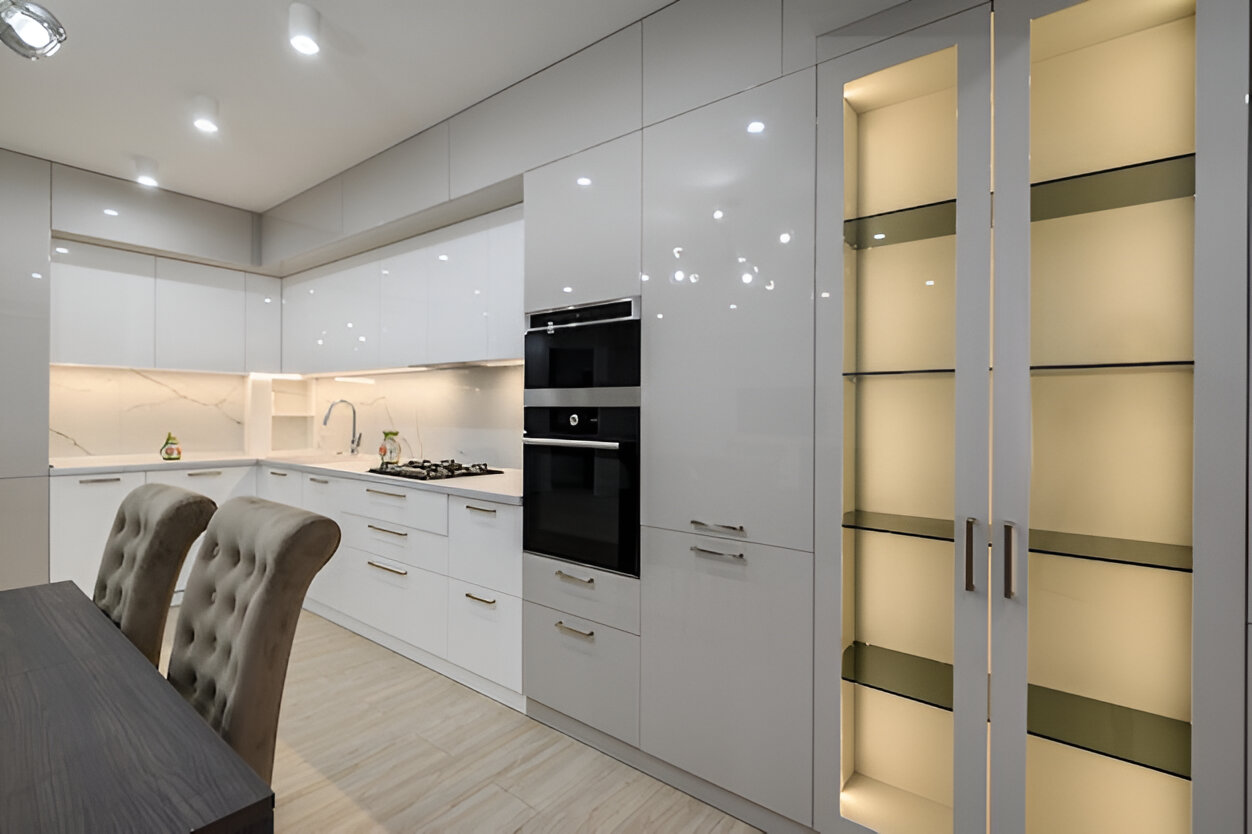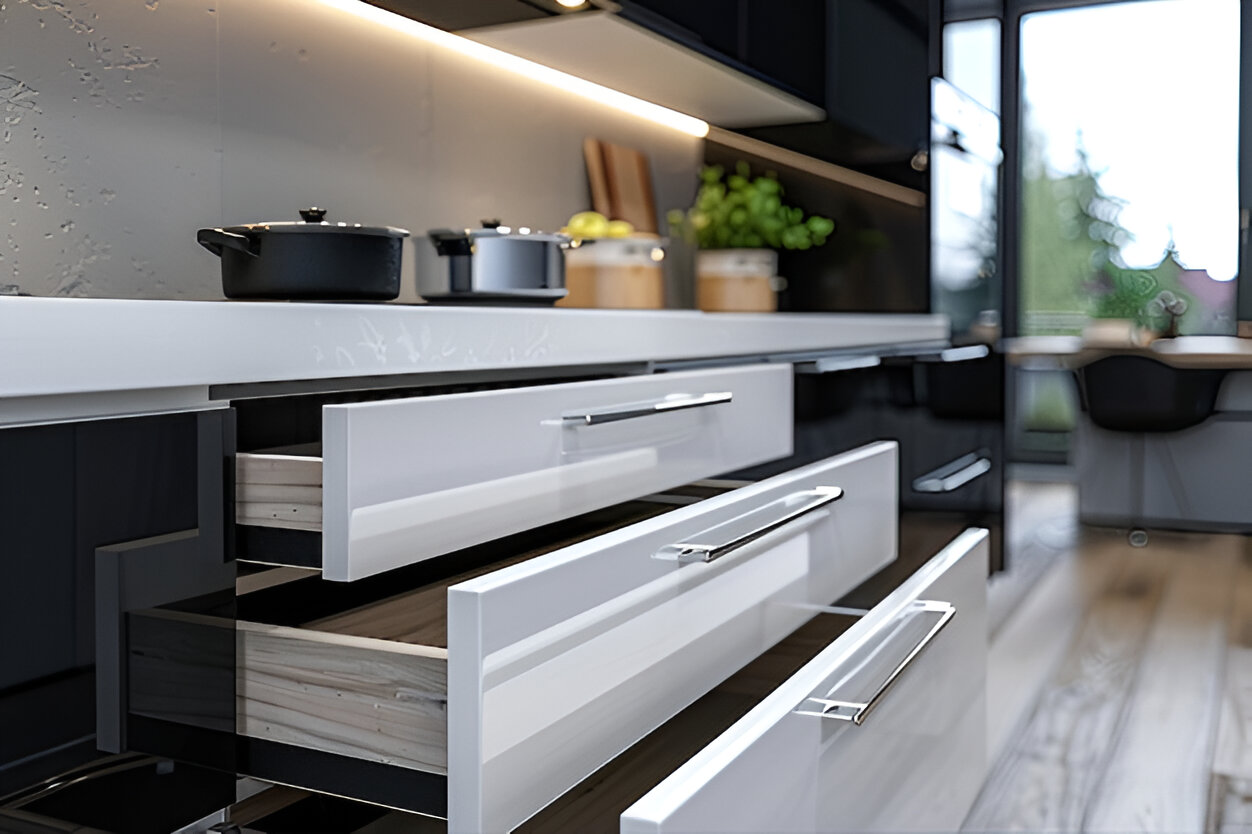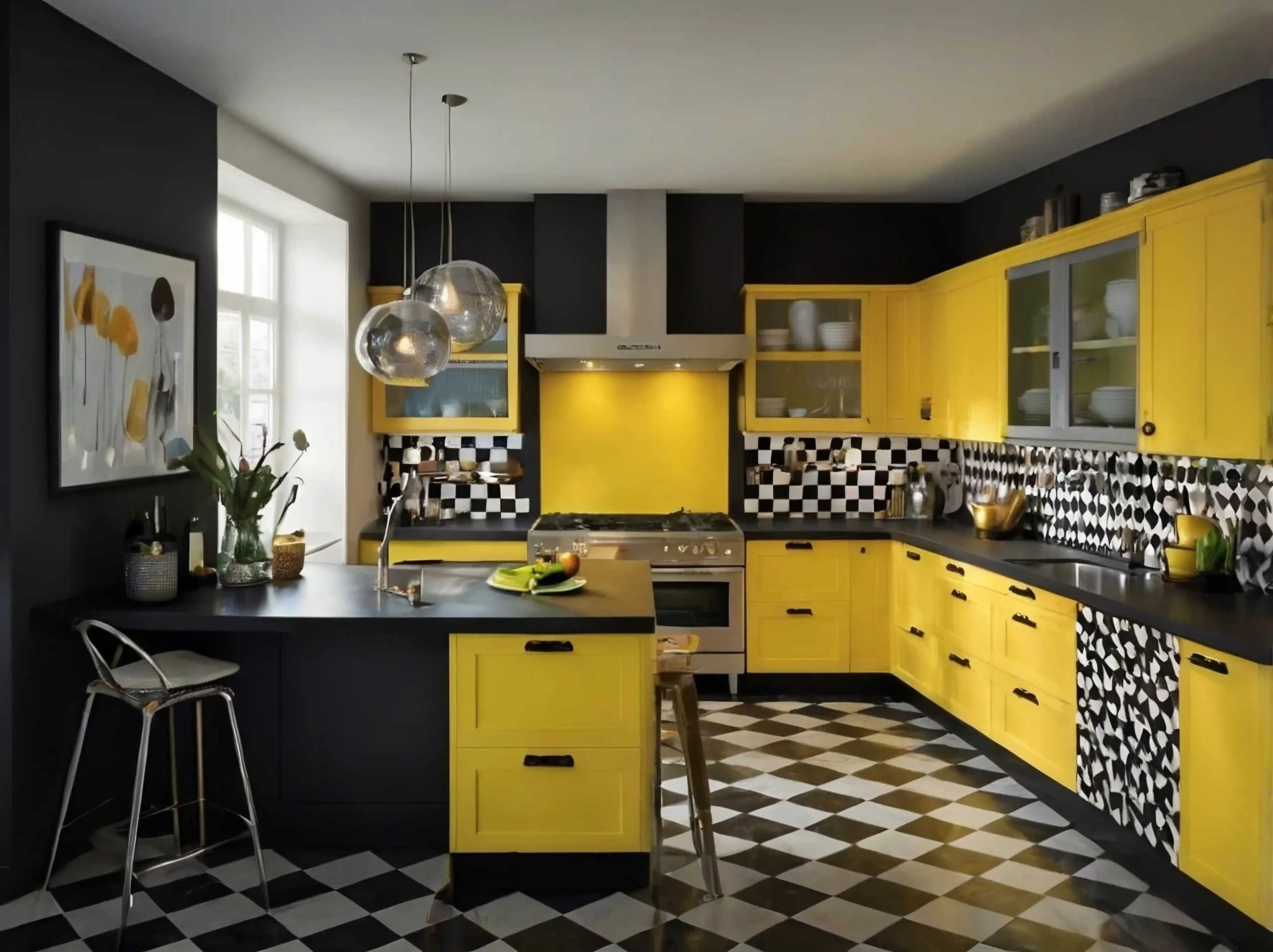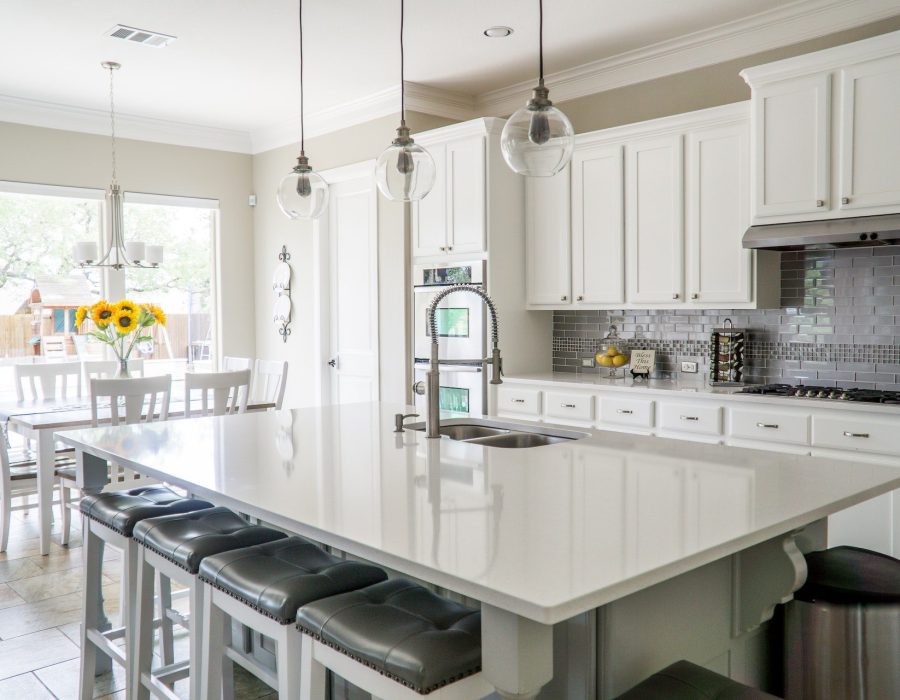When it comes to interior design, Shaker style cabinets vs. Raised Panel Cabinets are the most sought-after cabinet style. Aesthetics and functionality are two vital aspects that homeowners strive to achieve. The choice of furniture and design elements can significantly impact the overall ambiance of a space. This article will explore two popular styles and delve into their unique characteristics, advantages, limitations, and how they balance aesthetics and functionality.
Overview of Shaker Style
The Shaker style originated from the religious Shaker movement in the 18th century. It is known for its simplicity, minimalism, and focus on functionality. Shaker-style furniture and design elements feature clean lines, understated ornamentation, and a commitment to craftsmanship. The emphasis is on creating timeless pieces that are both practical and visually appealing.
Advantages of Shaker Style
Shaker style cabinets have endured for years due to their timeless appeal and versatility. The Shaker style’s clean lines and uncluttered look contribute to a sense of calm and tranquility in a space. Additionally, the simplicity of the design allows for easy integration with various interior design styles.
Practicality and durability are also key attributes of Shaker-style furniture. The focus on functionality in Shaker design ensures that every piece serves a purpose. The furniture is designed to be practical and useful, often featuring built-in storage solutions and ergonomic considerations. This makes Shaker-style furniture ideal for traditional and modern homes, where efficient use of space is highly valued.
Limitations of Shaker Style
While comparing shaker vs. raised panel, the Shaker style has merits; it may not appeal to those who prefer intricate and ornate designs. The minimalism and lack of decorative elements in Shaker-style furniture can be seen as a limitation for those seeking a more visually opulent aesthetic.
Additionally, the restricted color palette commonly associated with the Shaker style is another factor that some individuals may perceive as a limitation. Shaker furniture often features earthy tones and neutral shades, emphasizing natural wood finishes.
Fortunately, contemporary interpretations of the Shaker style have allowed some flexibility in addressing these limitations. Modern designers and furniture manufacturers have introduced adaptations and variations incorporating elements of the Shaker style while accommodating a broader range of design preferences.
Overview of Raised Panel Style
Conversely, the raised panel style exudes elegance, sophistication, and traditional aesthetics. This style dates back centuries and is often associated with formal and luxurious interiors. Raised panel design features prominently carved panels on furniture and architectural elements, showcasing craftsmanship and attention to detail.
Advantages of Raised Panel Style Cabinet
The raised panel cabinet style boasts several advantages contributing to its popularity and desirability among homeowners. One of the primary advantages is the luxurious and ornate appearance it brings to a space. The hallmark of raised panel design lies in its intricate detailing and decorative elements that exude a sense of grandeur and luxury.
Another significant advantage of the raised panel style is its wide range of design options and customization possibilities. The intricate detailing and carving techniques in raised panel design allow for many variations and personalization. Homeowners can choose from panel designs, motifs, and ornamental accents to suit their tastes and preferences.
Limitations of Raised Panel Style
While raised panel style can create a visually stunning impact, it may not be suitable for all spaces. The ornate and detailed nature of raised panel design can be overwhelming in smaller rooms or spaces with limited natural light.
Additionally, raised panel style may not harmonize well with contemporary or modern design styles, which tend to favor simpler and more streamlined aesthetics. It is also important to note that raised panel style often comes with a higher price tag due to the intricate detailing and customization options.
Shaker Style Cabinets Vs. Raised Panel Cabinets: Aesthetics and Functionality
The difference between shaker and raised panel shows that they represent two approaches to aesthetics and functionality. Shaker style prioritizes simplicity, minimalism, and practicality, while raised panel style focuses on elegance, luxury, and showcasing craftsmanship. The choice between the two styles depends on personal preferences, existing interior design elements, and the desired ambiance of the space.
Shaker Style Cabinets Vs. Raised Panel Cabinets: Cost Comparison
Several factors come into play regarding shaker vs. raised panel cabinets cost. Shaker-style cabinets, known for their simplicity and clean lines, are often more affordable. The straightforward construction and minimal ornamentation of Shaker cabinets require less intricate detailing, which can help keep the production costs lower. Additionally, the popularity of the Shaker style has led to a wider availability of affordable options in the market, offering homeowners more choices at various price points.
On the other hand, raised panel cabinets typically involve more intricate craftsmanship and decorative elements, which can contribute to a higher price tag. The raised panels, often featuring carved designs and complex detailing, require additional labor and materials. The ornate and luxurious appearance of raised panel cabinets adds a level of sophistication and craftsmanship that comes at a premium. Homeowners seeking a more elaborate and visually luxurious aesthetic can invest in raised panel cabinets, recognizing the added value they bring to their space.
Shaker Style Cabinets Vs Raised Panel Cabinets: Maintenance
Choosing between shaker cabinets vs raised panels does not inherently dictate the maintenance regimen for your cabinet doors. Both styles necessitate equivalent care to ensure extended durability. The determining factor influencing the level of attention accorded to your cabinet doors pertains solely to the materials and finishes, a shared consideration.
Both shaker doors vs raised panels invariably attract dust and grime along their perimeters, necessitating consistent cleaning. Cabinet doors endowed with more expansive overlays tend to exhibit heightened visibility as dust and various forms of debris accumulate upon them.
Shaker Style Cabinets Vs. Raised Panel Cabinets: Construction And Installation
An additional factor with raised panel cabinets vs shakers is the installation process. It is valid to assert that both styles share identical construction characteristics, as they are available in framed and frameless variations. In framed construction, the cabinet doors are affixed to a front-facing frame, while frameless construction involves doors suspended on the cabinet’s sides, lacking a supporting frame.
Although both raised panel cabinet doors vs shakers can incorporate either framed or frameless construction, shaker designs are often associated with frameless construction due to their inclination toward simplicity. In contrast, raised panel cabinets predominantly embrace framed construction to uphold a more traditional aesthetic.
Which Style is Right for You?
Consider your preferences and design goals to determine which style suits you best in shaker vs. raised panel kitchen cabinets. The Shaker style might be perfect if you appreciate clean lines, minimalism, and a timeless look. On the other hand, if you desire a more formal, opulent, and traditional ambiance, raised panel style could be the ideal choice. It’s also worth considering the existing interior design elements and the overall atmosphere you wish to create in your home.
Case Studies: Shaker Style and Raised Panel in Real Homes
Now that you know the pros and cons of shaker and raised cabinets, let’s explore some case studies to understand better how the Shaker and raised panel styles can be incorporated into real homes. In a contemporary setting, Shaker-style furniture can add a touch of simplicity and functionality, creating a balanced and harmonious environment. In contrast, raised panel style shines in formal dining rooms or elegant living spaces, elevating the overall atmosphere and providing a sense of refinement.
Finding the Balance: Mixing Shaker Style and Raised Panel
A harmonious blend between shaker vs. raised panel cabinets 2024 elements creates a uniquely personalized interior design. Incorporate Shaker-style furniture with raised panel accents or vice versa to balance simplicity and ornateness.
- Start with Shaker-style furniture as foundational pieces to establish a clean and minimalist backdrop.
- Introduce raised panel accents strategically to add visual interest and a touch of grandeur.
- Consider raised panel detailing on select furniture pieces or architectural elements.
- Alternatively, incorporate Shaker elements into a predominantly raised panel design to provide a counterbalance.
- Consider proportion, scale, and placement carefully to achieve a cohesive and well-balanced composition.
- The fusion of Shaker style and raised panel elements results in a space showcasing functionality and visual appeal.
- Enjoy the timeless appeal of Shaker design while incorporating the luxurious detailing of raised panel elements.
At A Glance
By now, you know everything you need to know about Shaker cabinets vs. Raised Panel cabinets, but for your ease, we will summarize it so you can glance at it for a quick summary!
| Shaker Style Cabinets | Raised Panel Cabinets | |
|---|---|---|
| Design | Simple and clean lines with a flat center panel and minimal ornamentation. | Ornate and decorative with a raised center panel and intricate detailing on the edges. |
| Style | Timeless and versatile, suitable for both traditional and modern designs. | Traditional and formal, often found in classic or ornate kitchen designs. |
| Versatility | Adaptable to various kitchen styles and can be easily paired with different hardware and finishes. | Often more expensive than Shaker-style cabinets due to the additional labor and craftsmanship involved in creating the raised panel effect. |
| Maintenance | Easy to clean and maintain due to their simple design and lack of intricate detailing. | It may require more maintenance due to intricate detailing, which can accumulate dust and require additional cleaning. |
| Cost | Generally more affordable than Raised Panel cabinets due to their simpler construction. | It may require more maintenance due to the presence of intricate detailing, which can accumulate dust and require additional cleaning. |
| Popularity | Widely popular and considered a classic choice in kitchen cabinetry. | Still popular but more commonly seen in traditional or formal kitchen designs. Shaker style has gained popularity in recent years. |
Remember that these comparisons are generalizations; individual manufacturers may offer variations within each style. Personal preferences and the overall kitchen design will ultimately dictate the best choice for your specific needs.
Conclusion
In the realm of interior design, aesthetics and functionality are essential considerations. The choice of Shaker style cabinets vs Raised Panel Cabinets depends on personal preferences, the desired ambiance, and the existing design elements. The Shaker style offers a timeless and practical approach, while raised panel style brings luxury and traditional elegance. By understanding each style’s distinctive characteristics, advantages, and limitations, you can make an informed decision that best suits your home and personal taste. You can head to our store, badger Cabinets, in Oak Creek, Wisconsin, to browse our amazing cabinet collections.
FAQs
1. Can Shaker-style furniture work in a modern interior design?
Yes, Shaker-style furniture can work well in a modern interior design. While the Shaker style originated in the 18th century, its simplicity, clean lines, and functionality have made it a timeless design choice that can be adapted to various aesthetics, including modern interiors. It aligns with modern design principles, often emphasizing clean lines, simplicity, and minimal ornamentation.
2. Is raised panel style suitable for small spaces?
Raised panel style can be overwhelming in small spaces, especially if the intricate detailing takes up too much visual space. Consider using raised panel accents or opting for simpler designs in tight areas. However, it’s important to note that personal taste and design preferences vary, and some individuals may appreciate the aesthetic appeal of raised panel cabinets in their small spaces.
3. Can I mix the Shaker style and raised panel elements in the same room?
Mix the Shaker style and raised panel elements in the same room to create a unique and eclectic design. Mixing different styles can add visual interest and depth to a space. However, doing so thoughtfully is important to ensure a cohesive and harmonious look. Start by establishing a clear design concept or theme for the room.
4. Are there alternative styles to consider apart from Shaker and raised panel?
Numerous other interior design styles exist, such as contemporary, mid-century modern, Scandinavian, and industrial. Explore different styles to find the one that resonates with your preferences and complements your space. Although, the Shaker style is considered an all-rounder and matches every design.
5. Where can I find quality Shaker style and raised panel furniture?
Quality Shaker style and raised panel furniture can be found online and offline at reputable furniture stores. Consider visiting local showrooms or exploring trusted online retailers specializing in these styles. Our range of Shaker and Raised Panel cabinets are also unmatched anywhere else with their colorful hues.










